Talk Abstracts and Speaker Biographies
-
 Proving That Programs Eventually Do Something Good
Proving That Programs Eventually Do Something GoodAbstract
Software failures can be sorted into two groups: those that cause the software to do something wrong (e.g. crashing), and those that result in the software not doing something useful (e.g. hanging). In recent years automatic tools have been developed which use mathematical proof techniques to certify that software cannot crash. But, based on Alan Turing’s proof of the halting problem’s undecidability, many have considered the dream of automatically proving the absence of hangs to be impossible. While not refuting Turing’s original result, recent research now makes this dream a reality. This lecture will describe this recent work and its application to industrial software.
Biography
Dr. Byron Cook is a Principal Researcher at Microsoft Research in Cambridge, UK as well as Professor of Computer Science at University College London (UCL). He is one of the developers of the Terminator program termination proving tool, as well as the SLAM software model checker.
-
 Machine Learning for Medical Image Analysis
Machine Learning for Medical Image AnalysisAbstract
Analysis of medical images is essential in modern medicine. With the increasing amount of patient data, new challenges and opportunities arise for different phases of the clinical routine, such as diagnosis, treatment and monitoring.
The InnerEye research project focuses on the automatic analysis of patients’ medical images. It uses state of the art machine learning techniques for the:
- automatic delineation and measurement of healthy anatomy and anomalies;
- robust registration for monitoring disease progression;
- semantic navigation and visualization for improved clinical workflow;
- development of natural user interfaces for medical practitioners.
Our mission is to advance the state of the art in machine learning and marry it with medical expertise, with application in computer-aided diagnosis, personalized medicine and efficient data management. Some of this technology is now incorporated within the Microsoft Amalga Unified Intelligence System.
Biography
Antonio Criminisi joined the Machine Learning and Perception group at Microsoft Research Cambridge in June 2000 as Visiting Researcher. In February 2001, he moved to the Interactive Visual Media Group in Redmond (WA, USA) as a Post-Doctorate Researcher. In October 2002, he moved back to the Machine Learning and Perception Group in Cambridge as Researcher. Antonio’s current research interests are in the area of medical image analysis, object category recognition, image and video analysis and editing, one-to-one teleconferencing, 3D reconstruction from single and multiple images with application to virtual reality, forensic science and history of art.
Antonio Criminisi was born in 1972 in Italy. In October 1990 he was appointed “Alfiere del Lavoro” by the Italian President F. Cossiga for his successful studies. In July 1996 he received a Degree in Electronics Engineering at the University of Palermo and in December 1999, he obtained a “Doctor of Philosophy” (PhD) Degree in Computer Vision at the University of Oxford. His thesis “Accurate Visual Metrology from Single and Multiple Uncalibrated Images” won the British Computer Society Distinguished Dissertation Award for the year 2000 and was published by Springer-Verlag London Ltd. in August 2001. Antonio was a Research Fellow at Clare Hall College, Cambridge from 2002 to 2005. Antonio has won a number of best paper prizes in top computer vision conferences.
-
STM in the Small: Trading Generality for Performance in Software Transactional Memory
Abstract
Data structures implemented using software transactional memory (STM) have a reputation for being much slower than data structures implemented directly from low-level primitives such as atomic compare and-swap (CAS). In this paper we present a specialized STM system (SpecTM) that allows the program to express additional knowledge about the particular operations being performed by transactions – e.g., using a separate API to write transactions that access small, fixed, numbers of memory locations. We show that data structures implemented using SpecTM offer essentially the same performance and scalability as implementations built directly from CAS. We present results using hash tables and skip lists on machines with up to 8 sockets and up to 128 hardware threads. Specialized transactions can be mixed with normal transactions, allowing fast-path operations to be specialized for greater performance, while allowing less common cases to be expressed using normal transactions for simplicity. We believe that SpecTM provides a “sweet spot” for expert programmers developing scalable data structures.
Biography
I have recently received my PhD from EPFL, Switzerland and am now working as a Post-Doc in Systems and Networking group at Microsoft Research Cambridge. So far, I have mostly worked on topics related to transactional memories (TM). My main goal and research interest is to have transactional memories used in production by average programmers in their day-to-day work. This includes solving problems related to performance, programming language integration and integration with future hardware support, among other issues.
-
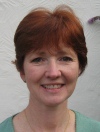 How to Present a Poster at an International Conference
How to Present a Poster at an International ConferenceAbstract
Presenting a poster at an international conference is a terrific opportunity to promote your research and raise your professional profile in a global academic forum. However, it can be daunting to compete with other presenters to get the attention of a passing audience. As well as a clear and captivating poster, you need the ability to build rapport quickly and present your subject positively and succinctly.
This can be especially challenging when English is the shared language but not everyone’s mother tongue. Whether you are a native or a non-native English speaker, you will require flexibility and sensitivity to others in order to get your message across clearly.
During the three poster sessions, Sue will be hovering in the room, watching and listening to your approach. She will then prepare to highlight on the final day the key thought-processes as well as the verbal and non-verbal skills you need to give a powerful poster presentation.
After this, Sue will be available to provide confidential one-to-one feedback for any students who are interested.
Biography
Sue Duraikan runs Duraikan Training, a consultancy which aims to help individuals and organisations develop. Duraikan Training provides support in designing and delivering learning strategies. We also run training sessions and one-to-one coaching on a wide range of professional skills. As a former teacher of Modern Languages and with wide experience of working globally, Sue Duraikan has a particular interest in cross-cultural communication, and deep respect for those who operate daily in a second or third language.
-
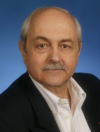 Microsoft Research Connections and Cloud Computing for Science
Microsoft Research Connections and Cloud Computing for ScienceAbstract
After a brief introduction of MSR Connections mission and activities, the speaker will review the current data intensive trends in computational science and present a practical approach to address the various resulting computing issues with the emerging cloud computing paradigm, in the context of an EU supported collaborative European project.
Biography
In the present position since July 2008. In this position part of an EMEA team responsible for MSR Connections in EMEA. Based in Geneva with main office at the MSR research centre in Cambridge UK.
As part of this job supporting and contributing to MSR Cloud computing strategy in Europe, including the incubation of a major EU project (www.venus-c.eu), and with direct engagements with major national funding agencies. Responsible for the strategic planning of the Cloud Computing team at the MSR ATLE in Germany.
He joined Microsoft in November 2005, when after the last EGEE (www.eu-egee.org) conference in his home town of Pisa, Fabrizio Gagliardi took responsibility for the company Technical Computing Initiative in Europe, Middle East, Africa and Latin America.
Before then and starting at the end of the 90’ he was among the pioneers in developing and introducing Grid computing in Europe, this led to projects like EU-DataGrid and EGEE, of which he was Principal Investigator and Director from 2000 till 2005.
In 2004-2005 while still Director of EGEE he contributed to the incubation and launching of more than 10 other EU projects all inspired and supported by the EU EGEE flag-ship.
-
 Strategic Thinking for Researchers
Strategic Thinking for ResearchersAbstract
From time to time at Microsoft Research we set aside time to talk about strategic aspects of research, that is, the big picture of why we do research and how to have different sorts of impact, beyond the more immediate tasks of writing papers, giving talks, and transferring ideas. This talk will cover some of these strategies for having a happy and productive career as a researcher.
Biography
Andy Gordon is a Principal Researcher at Microsoft Research Cambridge, and is a Professor at the University of Edinburgh. Andy wrote his PhD on input/output in lazy functional programming, and is the proud inventor of Haskell’s “>>=” notation for monads. He’s worked on a range of topics in concurrency, verification, and security, never straying too far from his roots in functional programming. His current passion is deriving machine learning algorithms from F# programs.
-
 The EDSAC Replica Project
The EDSAC Replica ProjectAbstract
The EDSAC Replica Project is building a replica of the Cambridge EDSAC Computer of 1949 for display at the National Museum of Computing at Bletchley Park, England. EDSAC was an early example of an electronic general purpose stored program computer, and the first to be run as service machine for users. Programs run on EDSAC contributed to the Nobel Prize winning work of John Kendrew on the molecular structure of myoglobin and Martin Ryle on the use of synthetic aperture radio astronomy.
The project requires a considerable amount of research and development before construction can commence: there is no complete “blueprint” to follow; instead, the design is being reconstructed from photographs and notebooks giving at best an incomplete record: the techniques of using thermionic valves to build digital circuits is a “lost art” and a “serial machine” the logical design of EDSAC is quite different to that of modern parallel machines.
In his talk, Andrew will cover the history of EDSAC, the machine architecture, and progress to date on constructing the replica machine.
-
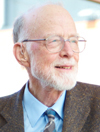 Can Computers Understand Their Own Programs?
Can Computers Understand Their Own Programs?Abstract
In his centenary year, it is appropriate to address a question that interested him. I will suggest that an answer can be found in Turing’s own works.
Turing invented the stored-program digital computer in 1936, with the specific purpose of defining clear limits to the understanding a computer can have of its own programs. He proved that a computer cannot always reliably answer a most important question: Will its own program ever terminate? This impossibility theorem has ever since lain at the foundation of computer science. But let us accept a lower criterion of computer understanding, that allows occasional failure to answer questions.
In 1947, Turing gave a much more positive answer to my question. He showed how a computer could often reason correctly about the correctness of its own programs. My entire research career has been devoted to the development of Turing’s method for reasoning about programs. I now see his method used in the worldwide software industry to reduce the cost of testing programs and the risk of residual program errors in service.
With further research and development, I’m confident that computers will routinely be able to answer a programmer’s general questions about program properties and behaviour. The answers will be useful at all stages of program design, development, and evolution. The collaboration of the programmer with the computer will reveal that the computer understands the details of the program, perhaps not perfectly, but certainly better than the programmer. (But the programmer understands much better the purpose of the program!).
I suggest that Turing would accept this test as a relevant analogue (in the specialised field of software engineering) of his famous Turing test for more general computer intelligence. But one question that remains for philosophical speculation is: Will a computer ever realise that it is reasoning about itself?
Biography
Tony Hoare’s computing interests were stimulated by his first (and only) degree in the humanities (1956): he studied Latin and ancient Greek, followed by philosophy, with particular interest in mathematical philosophy and logic. He learnt Russian during National Service in the Royal Navy. He spent a postgraduate year studying statistics at Oxford and another at Moscow State University, where he discovered the sorting algorithm Quicksort. In 1960, he joined the British Computer industry as a programmer, eventually rising to the rank of Chief Engineer.
His Academic career started in 1968 with appointment as professor at the Queen’s University, Belfast. He chose his long-term research area as proof of the correctness of programs. In the thick of the troubles, he built up a strong computing department, and moved in 1978 to do the same at Oxford. Following the example of Theoretical Physics, his interests broadened to the pursuit of Unifying Theories of Programming.
On reaching retiring age, he accepted an offer of employment at Microsoft Research in Cambridge, where he has seen a strong surge of interest in automation of computer proofs of program correctness. He continues to pursue this interest, while exhorting academic researchers in long-term pursuit of even more idealistic scientific goals.
-
.NET Gadgeteer: A Platform for Custom Devices
.NET Gadgeteer is a new platform conceived to make it easier to design and build custom electronic devices for a range of ubiquitous and mobile computing scenarios. This is designed to be accessible to a wide range of people with varying backgrounds and provide enough flexibility to allow experts to build relatively sophisticated devices and complex systems in less time.
-
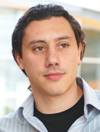 Towards Predictable Data Centers – Why Johnny Can’t Use the Cloud and What Can We Do About It?
Towards Predictable Data Centers – Why Johnny Can’t Use the Cloud and What Can We Do About It?Abstract
The shared nature of the network in today’s multi-tenant data centers implies that network performance for tenants can vary significantly. This makes application performance and tenant costs unpredictable, both key concerns in data centers. Motivated by these factors, the Predictable Data Center project aims to address such performance unpredictability by extending the tenant-provider interface to explicitly account for the network. To this end, we provide tenants with a virtual network that guarantees their network bandwidth. This talk will provide a project overview with a focus on two key questions; what motivated our virtual network designs and how can they be enforced. We argue that our virtual networks ensure a good trade-off between tenant guarantees and tenant costs by guaranteeing their “aggregate” network bandwidth.
Biography
Thomas Karagiannis is a researcher with the Systems and Networking group of Microsoft Research Cambridge, UK since 2006. He received his Ph.D. in Computer Science from the University of California, Riverside and his B.S at the Applied Informatics department of the University of Macedonia, in Thessaloniki, Greece. Before joining Microsoft, he has also been with Intel Research and the Cooperative Association for Internet Data Analysis (CAIDA). Thomas received the 2011 ACM SIGCOMM Honorable Mention award, and has several publications in the top conferences for computer networks. His research interests include data center networks, Internet measurements and modelling, and social networks.
-
 Human Computing and Crowdsourcing in Search
Human Computing and Crowdsourcing in SearchAbstract
Human Computation is an emerging paradigm that organizes human efforts to carry out a computation or task that computers cannot do well, like detecting objects in videos. In this paradigm, humans become a type of processing unit and crowdsourcing serves as a tool for distributing computations to humans. In recent years, crowdsourcing has been popularized by commercial crowdsourcing platforms like Amazon’s Mechanical Turk and has reached an industrial scale, involving millions of Internet users who offer the human processing power. However, unlike CPUs, humans are, well, humans and are influenced by a great many things, including their own motives and aspects of the computation task. In this lecture we use the evaluation of search engines as a context for studying various aspects of crowdsourcing. In order to measure the performance of a search engine human assessments of search results are needed. Since online search engines involve millions of queries a day and at least 10 times as many retrieved documents, such a task seems like a perfect match for human computing. However, there are many issues to consider, as we will show through a number of experiments conducted using Amazon’s Mechanical Turk.
Biography
Gabriella Kazai is a consultant, working for the Integrated Systems group at Microsoft Research, Cambridge, UK. Her research interests include social information retrieval, information seeking behaviour and browsing, IR evaluation measures and test collection building, personal information management, book search and personal digital libraries. She is founder and organiser of the INEX Book Track since 2007, in the context of which she developed a crowdsourcing system for collecting relevance judgements for digitized books as part of a social game. Gabriella holds a PhD in Computer Science from Queen Mary University of London. She published more than 40 papers and organised several IR conferences and workshops.
-
Rough Guide to Being an Entrepreneur
Abstract
At some stage, you might want to exploit your ideas by starting a company, just as Bill Gates and Paul Allen did in 1975. It might even be the next Microsoft, or bought by them. I’ll give an overview of the process, explain some of the success factors investors look for, and how to go about writing a business plan and getting off the ground.
Biography
Jack Lang is a serial entrepreneur and business angel with high-tech and Internet companies based in Cambridge, where he is Entrepreneur in Residence, Centre for Entrepreneurial Learning, at the Judge Business School, University of Cambridge, an affiliated lecturer and member of the Faculty Board at the Computer Lab and a by-fellow of Emmanuel College. His latest venture is Raspberry Pi, a $25 computer for education. Previously, he was founder of Netchannel Ltd, an early interactive TV company that was acquired by ntl—where he became chief technologist. Before that, he founded Electronic Share Information Ltd, one of the first online brokerages, acquired by E*Trade Inc. Prior to that, he started a consultancy (now SAIC UK Ltd) that was involved in the early days of the “Cambridge Phenomenon”, and was a proper academic at the Computer Lab. He is author of The High-Tech Entrepreneur’s Handbook (FT.Com/Prentice Hall 2001). He has other interests in molecular gastronomy and fireworks.
-
From Transactions to Data flow and Back Again
Abstract
With multicore systems now being ubiquitous we face the key challenge of finding a general purpose parallel computational model that is understandable by software developers and can simplify the underlying computer architecture. Achieving this dual goal is, of course, predicated upon making efficient use of the current multi-core and future many-core systems.
We have been investigating Transactional Memory as synchronization primitive and will provide a summary of the main results achieved focusing on scheduling. Within Teraflux, we are now focusing on how to combine dataflow and transactional memory to provide such parallel programming model. The aim is to encourage, where possible, the single assignment properties of the dataflow computational model (aka share nothing functional programming properties or side-effect-free functions) which leads seamlessly to implicit parallelism. This lecture will include work-in-progress using the Scala language as a prototyping tool to experiment with dataflow and transactions.
Biography
Dr Mikel Lujan is a Royal Society University Research Fellow at the University of Manchester investigating how to co-design future many-core architectures and managed virtual execution environments. He also collaborates with the SpiNNaker project (a million ARM core massively parallel architecture capable of simulating up to one billion spiking neurons in real time) analysing and characterising the tra ffic of the interconnection network. Previously, he worked in Sun Microsystems Laboratories in California as part of the Phase II of the High Productivity Computer Systems project. He holds PhD (University of Manchester, 2002), MPhil (University of Manchester 1999), and MEng (University of the Basque Country, 1998) degrees in Computer Science.
Since his first paper in OOPSLA 2000, Mikel has authored more than 40 refereed papers and has amassed a rich research experience extending to a range of topics from modern software engineering practices for parallel applications to computer architecture, passing by new compiler techniques for Java. He also holds 3 US patents and is a member of the HiPEAC European Network of Excellence.
-
 Realising Touchless Interaction in the Operating Theatre
Realising Touchless Interaction in the Operating TheatreAbstract
The Kinect sensor has opened up the possibilities of touchless interaction in many different environments beyond simply gaming. However, our understanding of how users want and need to interact with a system through gestures is still very limited. With this presentation I will present our challenges and successes in designing a system for surgeons to manipulate 3D anatomical images during surgery through touchless interaction.
Biography
Dr. Helena Mentis is a postdoctoral researcher in the Socio-Digital Systems Group at Microsoft Research Cambridge and a fellow of Corpus Christi College, University of Cambridge. Her research focuses on the use and design of information technology for communication and coordination, particularly in healthcare, emergency management, and other critical domains. She received a PhD in Information Sciences and Technology from The Pennsylvania State University in 2010, MS in Communication from Cornell, and BS in Psychology from Virginia Tech.
-
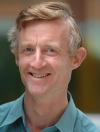 How to Write a Great Research Paper
How to Write a Great Research PaperHow to Give a Great Research Talk
Abstract
Writing papers and giving talks are key skills for any researcher, but they aren’t easy. In this pair of presentations, I’ll describe simple guidelines that I follow for writing papers and giving talks, which I think may be useful to you too. I don’t have all the answers—far from it—and I hope that the presentation will evolve into a discussion in which you share your own insights, rather than a lecture.
Biography
Simon Peyton Jones, MA, MBCS, CEng, graduated from Trinity College Cambridge in 1980. After two years in industry, he spent seven years as a lecturer at University College London, and nine years as a professor at Glasgow University, before moving to Microsoft Research in 1998. His main research interest is in functional programming languages, their implementation, and their application. He has led a succession of research projects focused around the design and implementation of production-quality functional-language systems for both uniprocessors and parallel machines. He was a key contributor to the design of the now-standard functional language Haskell, and is the lead designer of the widely used Glasgow Haskell Compiler (GHC). He has written two textbooks about the implementation of functional languages. More generally, he is interested in language design, rich type systems, software component architectures, compiler technology, code generation, runtime systems, virtual machines, garbage collection, and more. He is particularly motivated by direct use of principled theory to practical language design and implementation—that’s one reason he loves functional programming so much. He is also keen to apply ideas from advanced programming languages to mainstream settings.
-
How do multicore machines actually behave?
Abstract
Traditional discussions of shared-memory concurrency often assume that machines and programming languages are sequentially consistent, but in fact multiprocessors (such as x86, ARM, IBM POWER, SPARC, and Itanium) and languages (such as C/C++ and Java) have subtle relaxed-memory behavior that low-level concurrent algorithm design has to take into account. These talks will give an introduction to that, focusing on x86, ARM/POWER, and C/C++, and on how rigorous modeling and experimental testing can clarify a previously-confused situation.
Biography
Peter Sewell is an EPSRC Leadership Fellow at the University of Cambridge Computer Laboratory. He previously held a Royal Society University Research Fellowship (1999-2007), and took his PhD in Edinburgh in 1995, supervised by Robin Milner, after studying in Cambridge and Oxford. His research aims to build rigorous foundations for the engineering of real-world computer systems, to make them better-understood, more robust, and more secure. This applied semantics work involves programming languages, network protocols, and security, and currently is focused on the relaxed memory models of multiprocessors and concurrent languages.
-
 Body Part Recognition: Making Kinect Robust
Body Part Recognition: Making Kinect RobustAbstract
Microsoft recently launched Xbox Kinect (http://www.xbox.com/kinect), a revolution in gaming where your whole body becomes the controller. Human pose estimation has long been a “grand challenge” of computer vision, and Kinect has been the first product that meets the speed, cost, accuracy, and robustness requirements to take pose estimation out of the lab and into the living room.
In this talk we will discuss some of the challenges of pose estimation and the technology behind Kinect, detailing a new algorithm, body part recognition, which drives Kinect’s skeletal tracking pipeline. Body part recognition uses a classifier to produce an interpretation of pixels coming from the Kinect depth-sensing camera into different parts of the body: head, left hand, right knee, etc. Estimating this pixel-wise classification is extremely efficient in parallel on the GPU. The classifications are then pooled across pixels to produce hypotheses of 3D body joint positions for use by a skeletal tracking algorithm. Our method has been designed to be robust, in two ways in particular. First, we train the system with a vast and highly varied training set of synthetic images to ensure the system works for all ages, body shapes & sizes, clothing and hair styles. Second, the recognition does not rely on any temporal information, and this ensures that the system can initialize from arbitrary poses and prevents catastrophic loss of track, enabling extended gameplay for the first time.
Biography
Jamie Shotton graduated his PhD in computer vision from the University of Cambridge, and started as a researcher at Microsoft Research Cambridge in the Machine Learning & Perception group in 2008. His recent work has focused on human pose estimation, and he architected the human body part recognition algorithm that drives Kinect’s skeletal tracking algorithm. The paper describing this work won the Best Paper Award at CVPR 2011, and the approach was awarded the Royal Academy of Engineering’s MacRobert Award 2011. His on-going research includes gesture and action recognition, object recognition, medical imaging, and machine learning.
-
 PhD Summer School 2012
PhD Summer School 2012.NET Gadgeteer, A Platform for Custom Devices
Biography
Scarlet Schwiderski-Grosche is a Research Program Manager at Microsoft Research Cambridge, working for Microsoft Research Connections in the EMEA region. As such, she is in charge of the Microsoft Research PhD Scholarship Programme and coordinates a number of research projects.
Scarlet has a PhD in Computer Science from University of Cambridge. She was in academia for almost 10 years before joining Microsoft in March 2009. In academia, she worked as Lecturer in Information Security at Royal Holloway, University of London.
-
 Planetary Prediction Services for Society
Planetary Prediction Services for SocietyAbstract
Information provision services are rapidly evolving towards providing better targeted information about our planet to meet the demands of society and decision makers. Providing important information about food, water, conflict, disease, economics, weather, and other planetary services is increasingly reliant on computational methods that integrate empirical evidence with sufficiently resolved models of the real systems to deliver the most reliable information presently possible. I will describe our work to advance state of the art in delivering information about our planet to those that most urgently need it.
Biography
Matthews core research is to improve state of the art in earth system modelling. We basically need better ways to objectively identify necessary and sufficient complexity of earth system model components – the same of course applies to developing models of complex natural systems more generally. This involves a lot of Bayesian inference and uncertainty quantification. In the past he has published in evolutionary plant ecophysiology (using IBMs), animal population dynamics (using ODE and PDE models), conservation ecology (databases), disease evolution and dynamics (various), and nonlinear dynamical systems generally (maths). In the present, as well as his core research, he is working on a broad range of subjects: predicting global phenological patterns, synthetic ecosystems, species distribution modelling, extinction rates on food webs, predicting road development, marine ecosystem dynamics, sustainable harvesting, and developing new computational tools and methods.
-
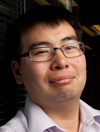 Functional First Programming in an Information-Rich World
Functional First Programming in an Information-Rich WorldAbstract
We live in an increasingly the complex and information-rich world that provides huge opportunities for programmers to thrive, explore and create exciting applications. Functional first programming approaches offer the ability to develop simple, correct, robust code for complex problems that are ideal for this. In this talk we will explore how the design and features of the F# language unleashes developers to maximise their creativity and productivity, and embeds them in the seamless access to the world of typed data and services on the web, cloud and in the enterprise. Following the talk, come along to the F# tutorial to get started with some hands-on experience.
Biography
Dr Kenji Takeda is Solutions Architect and Technical Manager for the Microsoft Research Connections EMEA team. He has extensive experience in Cloud Computing, High Performance and High Productivity Computing, Data-intensive Science, Scientific Workflows, Scholarly Communication, Engineering and Educational Outreach. He has a passion for developing novel computational approaches to tackle fundamental and applied problems in science and engineering. He was previously Co-Director of the Microsoft Institute for High Performance Computing, and Senior Lecturer in Aeronautics, at the University of Southampton, UK. There he worked with leading high value manufacturing companies such as Airbus, AgustaWestland, BAE Systems, Rolls-Royce and Formula One teams, to develop state-of-the-art capability for improving science and engineering processes. He also worked in the areas of aerodynamics, aeroacoustics and flight simulation.
-
Intellectual Property at Microsoft
Abstract
Intellectual Property represents a sea change in how businesses use ideas to innovate, differentiate, and win in the marketplace. Much of the innovations today change the way people work, interact, and play and IP is changing the very landscape of doing business for industry, governments, educators, and consumers. But what, exactly, does someone mean when they refer to “intellectual property?” In this presentation, we will look at the different types of IP what makes IP strong or weak, and how entities can use them to remain relevant and competitive in the marketplace.
Biography
Pablo Tapia is the subsidiary attorney for the Microsoft Research Lab in Cambridge, UK, and the Advanced Technology Centers in Aachen (Germany), Herzliya (Israel), and Cairo (Egypt). In addition to patent issues, Pablo counsels clients on general IP issues, open source, EU funding engagements, university engagements, data protection, and licensing. Pablo has also managed patent portfolios for other Microsoft’s R&D efforts including Microsoft Research labs in China, India and Redmond.
Before joining Microsoft, Pablo was a patent attorney at Greenberg Traurig in Los Angeles and a software engineer at Motorola. Pablo received both his JD and B.S. Computer Science from Arizona State University, and is admitted to practice in California, Arizona, and the US Patent and Trademark Office.
-
Microsoft Academic Search
Abstract
Microsoft Academic Search is a free service developed by Microsoft Research to help students and researchers quickly and easily find academic content, researchers, institutions, and activities. Academic Search indexes millions of academic papers from publishers, repositories, and the web, and surfaces key relationships between and among subjects, content, and authors in a manner that highlights the critical links that help define scientific research. This talk will cover the confluence of machine learning, entity extraction, and information retrieval research from our various Microsoft Academic Search indexes and integrates repository content, authors, and institutional level information; and the underlying composite data may be utilized by repositories and other applications via an application programming interface (API).
Biography
Alex Wade is Director for Scholarly Communication at Microsoft Research, where he oversees a portfolio of researcher-focused products and services to explore emerging trends in the ways that research is disseminated, archived, and re-used. Alex holds a Bachelor’s degree in Philosophy from U.C. Berkeley, and a Masters of Librarianship degree from the University of Washington. During his career at Microsoft, Alex has managed the corporate search and taxonomy management services; and served as Senior Program Manager for Windows Search. Prior to joining Microsoft, Alex was Systems Librarian at the University of Washington, and held technical library positions at the University of Michigan and the University of California at Berkeley.
-
 MSR Cambridge Lab Overview
MSR Cambridge Lab OverviewBiography
Ken Woodberry is deputy managing director at Microsoft’s Cambridge Research Lab with responsibility for the lab’s business-facing activities, including technology transfer, incubation, licensing, spin-outs, and other models for utilizing the intellectual property generated by the lab’s research groups.
Ken also heads the Computer-Mediated Living research group (CML) which he founded in 2003. CML’s vision is fundamentally interdisciplinary, bringing together hardware engineering, computer science, psychology, and sociology to address the problem of designing innovative technology to support everyday life in its widest sense. Ken’s personal research interests include human-computer interaction, information retrieval, digital media management, and ubiquitous computing. He has numerous publications in these areas and holds several patents.
